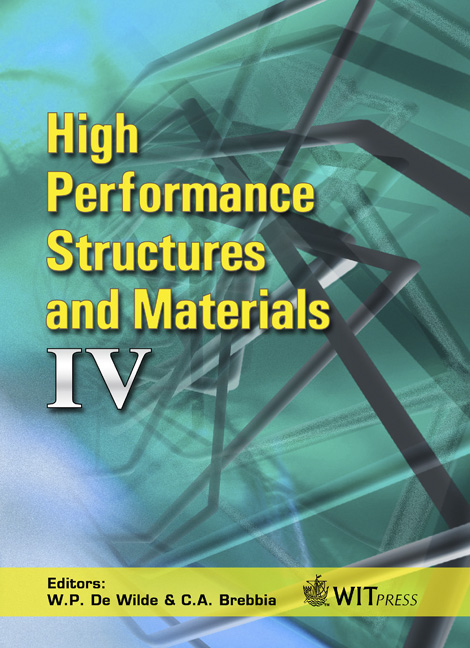A Comparison Of Slamming Impact Models On Orthotropic Sandwich Panels
Price
Free (open access)
Transaction
Volume
97
Pages
10
Page Range
359 - 368
Published
2008
Size
422 kb
Paper DOI
10.2495/HPSM080371
Copyright
WIT Press
Author(s)
J. Walsh, G. Hou & K. Soman
Abstract
Hull slamming due to wave impacts is a challenging problem in the design of high-performance, sandwich-construction marine craft. Sandwich composites have mechanical properties fundamentally different from those of steel or aluminum, and sandwich core shear is a common failure mode in planing craft hull panels. This paper compares the slamming response of an isotropic hull panel with an orthotropic composite sandwich panel. Linear, 3D finite element analysis is performed for a spatially constant pulse model and a traveling pulse model. It is shown that sandwich panel response is sensitive to pressure variation in both time and space. Therefore, dynamic analysis of a traveling pulse is essential for effective design. Keywords: slamming, composite, sandwich panel, wave impact, pressure pulse, core shear, orthotropic, finite element analysis, natural frequency. 1 Introduction Hull slamming due to wave impacts is a challenging problem in the design of high-performance marine craft. It is common to state the hull stress response of a slamming impact in terms of an equivalent uniform static load or as a spatially constant dynamic pressure pulse. This has been useful for isotropic materials, which fail in tension at the fixed panel edges. Sandwich composites have mechanical properties fundamentally different from those of steel or aluminum, and sandwich core shear is a common failure mode in planing craft hull panels. Slamming can be defined as a severe impulsive hydrodynamic load with a short time constant relative to the periods associated with ship motions or
Keywords
slamming, composite, sandwich panel, wave impact, pressure pulse, core shear, orthotropic, finite element analysis, natural frequency.





